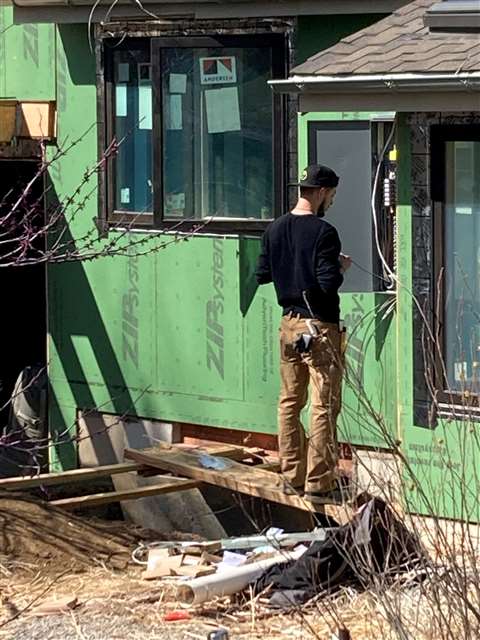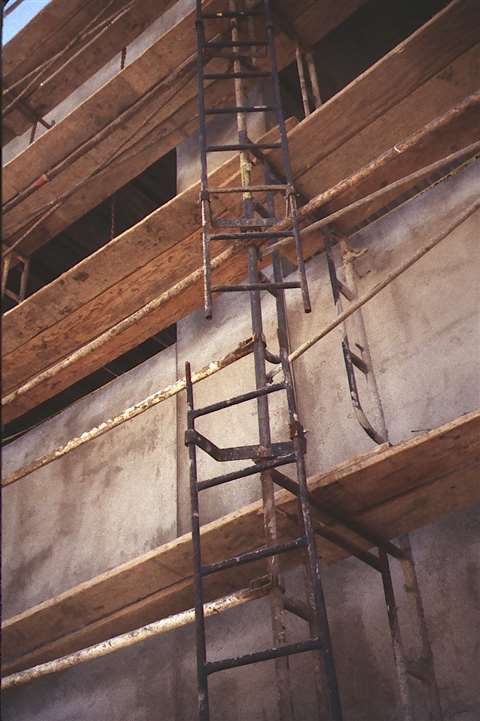Why ignorance is not bliss when it comes to scaffolding
16 May 2023
To ignore ignorance is not bliss but then to be ignorant is to be unknowledgeable and if that isn’t confusing, I beg you to read on.
 Figure 1. (Photo: David Glabe)
Figure 1. (Photo: David Glabe)
Ignorance is the lack of knowledge, and according to the Oxford dictionary, knowledge is defined as “facts, information, and skills acquired by a person through experience or education.” If such is the case, then ignorance must be the lack of facts, information, and skills. And by now, you are probably wondering what this has to do with scaffolding. Frankly, it is relevant and has a lot to do with scaffolding. Trust me.
But before we get into relevance, what’s with bliss? Well, the Oxford dictionary tells us that bliss “is perfect happiness, great joy.” For example, an exceptionally erected scaffold might bring you bliss, that is, perfect happiness and great joy. You admire the scaffold for its excellent design, functionality, ease of use, and safety. But here is the kicker: your bliss is based on what you know about scaffolding, your knowledge of scaffolding. That means your bliss may not be the same as another person’s bliss. If your level of knowledge is minimal, then your level of ignorance is high but if your level of knowledge is high, then your level of ignorance is low or nonexistent. It’s important to point out here that ignorance here is meant in the kindest of ways.
 Figure 2. (Photo: David Glabe)
Figure 2. (Photo: David Glabe)
Poor judgement related to scaffolding
Applying this concept to scaffolding, an ignorant person would judge a poorly constructed scaffold as pure bliss, that is the scaffold is perfect, while a knowledgeable person would notice the defects in the same scaffold and not consider it perfect or blissful. Take for example, Figure 1.
Would you consider this a scaffold that brings perfect happiness and great joy, or would you have concerns over its strength and stability? Apparently, the person who designed this scaffold thought it was perfect. What about Figure 2? It’s hard to believe that anyone would think this is a safe application of a ladder jack scaffold, but apparently someone did. What could possibly go wrong? Ignorance is bliss, isn’t it?
Interestingly, as facts, information, and skills are acquired by a person through experience and education, that person recognizes the hazards associated with the work at hand. Knowledge becomes a powerful thing. But then how much knowledge is necessary to erect a safe scaffold? What is the baseline for scaffold knowledge? It is generally accepted in the scaffold industry that the U.S. federal Occupational Safety and Health, OSHA, regulations are the baseline, the minimum standards that must be met when constructing and using a scaffold. Do you think the workers in Figure 3 meet that criteria? Attaching a fall protection lanyard to a rope which is attached to a flimsy pair of frames does not a safe anchor make. These workers haven’t even met the minimum acceptable standard, much less exceeded the industry expectations. Ignorance is indeed bliss.
Blissfully unaware
The late Donald Rumsfeld, and former U.S. Secretary of Defense, famously wrote that “There are known knowns. There are known unknowns. There are unknown unknowns. But there are also unknown knowns. That is to say, things that you think you know that it turns out you did not.” If you can follow the hidden logic, if it exists at all, the fact is that if you are not aware of the hazards of a poorly constructed scaffold, you will blissfully be unaware of impending disaster.
Take for example, Figure 4, where the electrician is standing on a questionable scaffold platform installed over an excavation, blissfully unaware of what could happen when the marginally adequate 2x4 breaks. Since he was bouncing up and down on the platform while performing his work, it can only be assumed that he was in a state of perfect happiness and great joy, a state of blissful ignorance. Life is good. Had the worker been trained, he would have known some unknowns and become knowledgeable about the hazards in his surroundings. Knowledge would increase, ignorance would decrease. Unknowns decrease, knowns increase. That raises the question of how much knowledge is enough knowledge.
 Figure 3. (Photo: David Glabe)
Figure 3. (Photo: David Glabe)
OSHA recognizes that knowledge varies, dependent on the task at hand. A scaffold user isn’t required to know as much as a scaffold erector. A scaffold inspector doesn’t need to know as much as a scaffold designer. Nowhere, however, does OSHA allow the worker to be ignorant.
The results of deficiencies
 Figure 4. (Photo: David Glabe)
Figure 4. (Photo: David Glabe)
Since all workers involved with the design, erection, and use of scaffolds must be trained, how is it that scaffolds are so poorly designed, erected and used? I suspect these deficiencies are a result of the lack of knowledge. It comes back to the unknown knowns or perhaps the unknown unknowns. In any event, if you have no knowledge, you are in a state of bliss, thinking that you know what you don’t know.
Aiding and abetting the lack of knowledge is the lack of enforcement. Those workers assigned the task, and responsibility, of enforcing the minimum standards do not know the standards, despite thinking that they do. Ignorance raises its ugly head once again, To further exacerbate the issue, ignorance reinforces ignorance. Common in the industry is the conclusion that if the worker doesn’t get injured or killed, and the scaffold doesn’t collapse, the scaffold is in compliance with the regulations, and more seriously, is a safe scaffold. Figure 5 proves the point, don’t you think?
 Figure 5. (Photo: David Glabe)
Figure 5. (Photo: David Glabe)
Ignorance compounds ignorance, resulting in a frustrating situation whereby ignorance is rewarded. While ignorance may be bliss, you will discover, if you already haven’t realized, knowledge can be a powerful thing, and ignorance ultimately is not bliss.
What is the solution? While we do training, would more training help? Would more enforcement help? Would the promulgation of more regulations help? Would better pay help? Call me ignorant if you want; I have no solution. Do you have the solution?
CONNECT WITH THE TEAM




